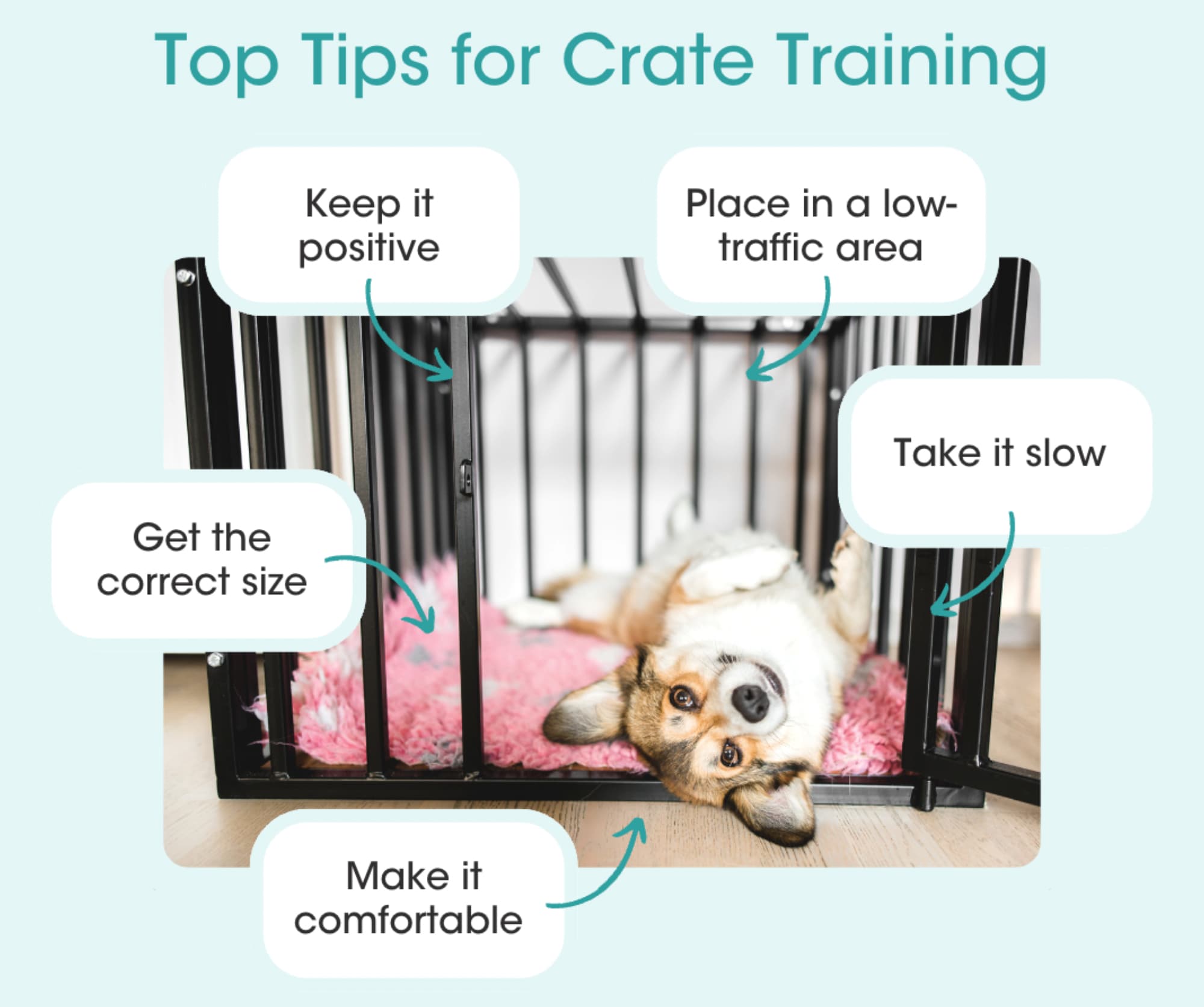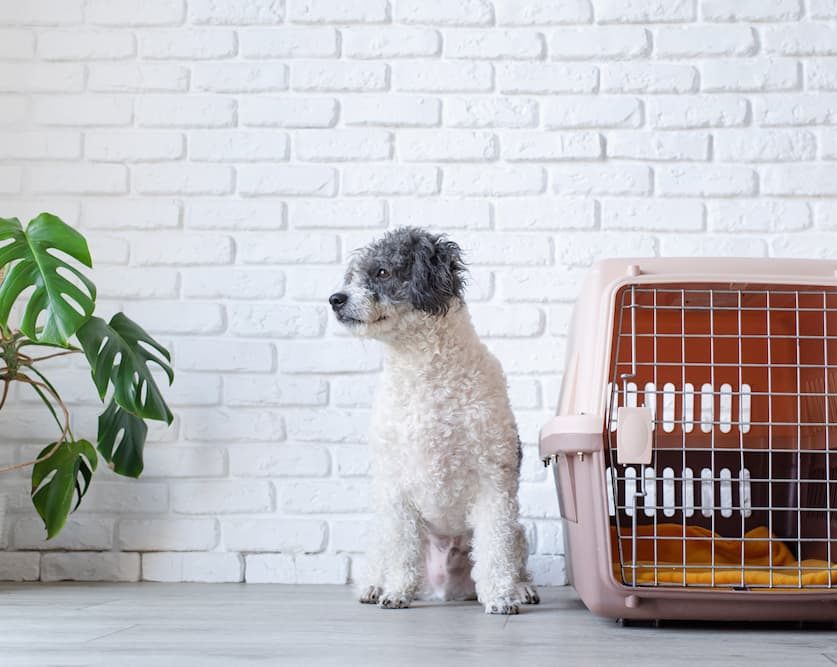Crate training is a very useful tool for any dog Owner or carer, it provides a safe place for the dog to utilise and the opportunity for the carers to always have a safe place to secure the dog. Crate training works at a different pace for every dog so it’s important to only move at their pace and maintain a positive association with the crate.
The benefits of crate training a dog
Crate training also benefits the dog’s well-being when they go to a vet or groomer where they’re kept in a cage throughout the day as they will be significantly less stressed. It’s important to consult a force-free/positive reinforcement trainer on crate training a dog to ensure their other quirks/training regime is aligned.
Where a Pet Sitter is assisting with crate training a dog, always consult the Owner before commencing.
What not to do when crate training a dog
This guide is a general flow of how to crate train a dog but ensure to tailor it to each individual dog for success. At no point should a dog be left in a crate crying, barking or howling in distress. “Letting them cry it out” is not an appropriate training method. An un-crate trained dog can cause serious harm or injury to themselves if left unattended in a crate.
The steps work best for a dog with no previous training, a dog who was improperly crate trained or has a negative experience with a crate will need much more training to de-sensitise them.
 10 steps to crate training a dog
10 steps to crate training a dog
Step 1: Get a crate suitable to the size of the dog. The crate must be at least big enough for them to stand up and turn around, ideally not too much space that they can run around.
Step 2: Ensure the crate is secure and sturdy. If it’s a pull-up, secure it with zip ties or alternatives to avoid any chance of the crate collapsing or busting open while the dog is left unattended.
Step 3: Make the crate welcoming and comfy, adding in a pet bed, blanket or other items. Ensure the items are not a choking or strangling hazard if the dog is going to be left alone or unsupervised.
Step 4: Introduce the dog to the crate, letting them sniff around and explore it – rewarding them for being close or in it. DO NOT close the door at this stage if they go in. Once they’re comfortable doing this a few times you can move to the next step.
Step 5: Begin introducing the dog to entering the crate, throwing treats in there for them to get and rewarding them again when they go in. Just make sure you know how to properly use treats to train your dog – DO NOT close the door at this stage if they go in. Create the association that entering the crate = reward! Rewards can be treats, cuddles, praise, play or anything of value to the dog. Do this multiple times until the dog is very comfortable.
Step 6: Once the dog is comfortable going in the crate, a good indication is if they’re choosing to go in there by choice to ask for a treat rather than being coaxed in, then you can start working on getting them to sit, stay and lay down in the crate. This should be one step at a time and with lots of rewards!
Step 7: Hopefully by this point, the dog will be choosing to go into the crate on their own accord and spend some time in there with the door open. This is when you can look to start closing the door. When they’re extremely comfortable in the crate, you can start closing the door and re-opening it immediately. If the dog stays calm you can reward them. If they react negatively, continue step 6 and try again at a later date. If they’re comfortable, close the door (re-opening it straight away) multiple times each time they’re in the crate, rewarding them each time.
Step 8: Once the dog is very comfortable with the door being closed, you can start keeping the door closed for short periods. If the dog begins to whine, bark or stress they are not ready for this step! Depending on how comfortable the dog is with the crate and your motivations for crate training, you can start by leaving them in the crate with the door closed and something to do like a kong, licking mat or snuffle toy while you supervise. Repeat this many times building up from a few minutes until the time you require, until you’re confident the dog will not be stressed if left unsupervised in the crate.
Step 9: The next step is to leave them unsupervised in the crate for the first time. Start with very small increments (minutes) of time and work your way up until they’re ready. This will be very different for every dog, do not leave them in there if they’re barking, crying or stressed in any way. Repeat this many times building up from a few minutes until the time you require, until you’re confident the dog will not be stressed if left unsupervised in the crate.
Step 10: Remember to never leave the dog in the crate with any hazards, ensure they have an easy-release collar that will unclip if caught or remove their collar altogether. Don’t leave any toys, treats or chews that are a choking hazard or risk of getting stuck. Most importantly never leave them if they will be stressed and attempt to get out this can cause serious injury.
How dog crates can be useful:
- To separate dogs. Whether it be they don’t know when to stop playing or for feeding time it helps keep them safe and provides an opportunity to rest.
- To secure them whilst opening doors, cleaning up a dangerous mess, having a tradie or guest over, or keeping them out of any negative situation.
- To keep them secure if leaving them alone or unsupervised.
Would prefer some expert help?
Find a Dog Trainer near you to help get started with crate training your dog.

